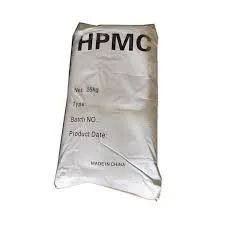
Dec . 21, 2024 10:20 Back to list
Applications and Properties of Hydroxyethyl Cellulose in Various Industries
Hydroxyethyl Cellulose A Versatile Polymer with Diverse Applications
Hydroxyethyl cellulose (HEC) is a non-ionic, water-soluble polymer derived from cellulose, a natural polymer obtained from plant cell walls. HEC is primarily produced by the etherification of cellulose with ethylene oxide, resulting in a compound that has unique properties making it valuable across various industries. Its versatility, safety, and eco-friendliness have made it a popular choice in applications ranging from pharmaceuticals to construction.
Properties of Hydroxyethyl Cellulose
HEC possesses several remarkable properties that contribute to its broad applicability. Primarily, it is highly soluble in water, forming a clear, viscous solution. This characteristic makes HEC an excellent thickening agent, enhancing the texture and stability of formulations. Additionally, it exhibits good film-forming abilities, allowing it to create protective and cohesive layers in various applications.
The polymer is also known for its excellent emulsifying properties. HEC effectively stabilizes emulsions by preventing the separation of oil and water phases, which is crucial in cosmetic formulations, food products, and pharmaceutical creams. Moreover, HEC is chemically stable and does not react with most ingredients, making it a reliable additive.
Applications in Pharmaceuticals
One of the most significant uses of HEC is in the pharmaceutical industry. It acts as a controlled-release agent, prolonging the release of active pharmaceutical ingredients (APIs) in solid dosage forms, such as tablets and capsules. This controlled release is essential for maintaining effective drug levels within the body and improving patient compliance. HEC is also utilized as a binder in tablets, ensuring uniform distribution of the active ingredients and improving tablet integrity.
In topical formulations, HEC serves as a thickener and stabilizer, offering desirable tactile properties and promoting skin hydration. Its biocompatibility and non-irritating nature make it suitable for sensitive skin applications, further solidifying its position in dermatological products.
Role in Cosmetics and Personal Care
The cosmetic industry heavily relies on HEC due to its unique properties. It is commonly used in shampoos, conditioners, lotions, and creams to enhance texture and improve product performance. By acting as a thickener, HEC helps achieve the desired viscosity while providing a luxurious feel to the product.
In hair care products, HEC is valued for its ability to impart shine and control frizz, making hair more manageable. In skin care, it aids in moisture retention, providing a protective barrier that helps prevent transepidermal water loss. This makes HEC a popular choice in hydrating formulations, serums, and moisturizers.
hec hydroxyethyl cellulose

Applications in Food and Beverage
In the food industry, HEC is utilized as a thickening agent and stabilizer in sauces, dressings, and beverages. Its ability to create a smooth texture enhances the sensory qualities of food products. Additionally, HEC can help improve the mouthfeel of beverages and maintain the emulsion stability of salad dressings.
The food-grade quality of HEC ensures that it can be safely incorporated into various edible products without compromising taste or safety. Its versatility allows food manufacturers to streamline their formulations while maintaining the desired characteristics of their products.
Contribution to Construction and Coatings
Beyond pharmaceuticals and personal care, HEC has made its mark in the construction sector. It is frequently used in cement-based materials such as mortars, concrete, and tile adhesives. HEC improves the workability, water retention, and adhesion of these materials, making them easier to apply and ensuring better performance once set.
In coatings, HEC acts as a thickener and stabilizer in paint formulations. It helps achieve the desired consistency and prevents sedimentation, facilitating application and improving the finish of the coated surface.
Eco-Friendly Considerations
As the world leans more towards sustainability, HEC stands out as an eco-friendly option. Being derived from natural cellulose, it aligns with the growing demand for biodegradable and renewable materials. The use of HEC reduces reliance on synthetic materials, contributing to a more sustainable approach in various industries.
Conclusion
Hydroxyethyl cellulose is a remarkable polymer with diverse applications across multiple sectors. Its unique properties, such as solubility, emulsification, and thickening capabilities, make it an essential ingredient in pharmaceuticals, cosmetics, food products, and construction materials. As industries continue to evolve towards sustainable practices, HEC’s natural origin and biodegradable nature will increasingly enhance its appeal, ensuring its relevance in the future.
-
Versatile Hpmc Uses in Different Industries
NewsJun.19,2025
-
Redispersible Powder's Role in Enhancing Durability of Construction Products
NewsJun.19,2025
-
Hydroxyethyl Cellulose Applications Driving Green Industrial Processes
NewsJun.19,2025
-
Exploring Different Redispersible Polymer Powder
NewsJun.19,2025
-
Choosing the Right Mortar Bonding Agent
NewsJun.19,2025
-
Applications and Significance of China Hpmc in Modern Industries
NewsJun.19,2025







